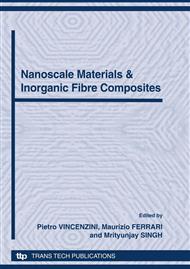p.1
p.6
p.16
p.22
p.28
p.34
p.40
Nanogaps for Sensing
Abstract:
Modern resistive chemical sensors include discontinuous nano/mesostructures. Sensing performances are then governed by the chemical nature of the nanostructure gap as well as by the sensor design at the nanogap scale. Various top-down, bottom-up and hybrid fabrication routes of discontinuous/nanogaped metal nano and mesostructures have been developed. These structures are assembled/organized on insulating surfaces for integration of resistor based devices for the specific sensing of chemicals in gaseous as well as in liquid media. Hydrogen sensing based on discontinuous/gaped palladium nano/mesostructures is a chosen case-study for the evaluation of various nano/mesogap fabrication methods.
Info:
Periodical:
Pages:
1-5
Citation:
Online since:
October 2010
Authors:
Keywords:
Price:
Сopyright:
© 2010 Trans Tech Publications Ltd. All Rights Reserved
Share:
Citation:


